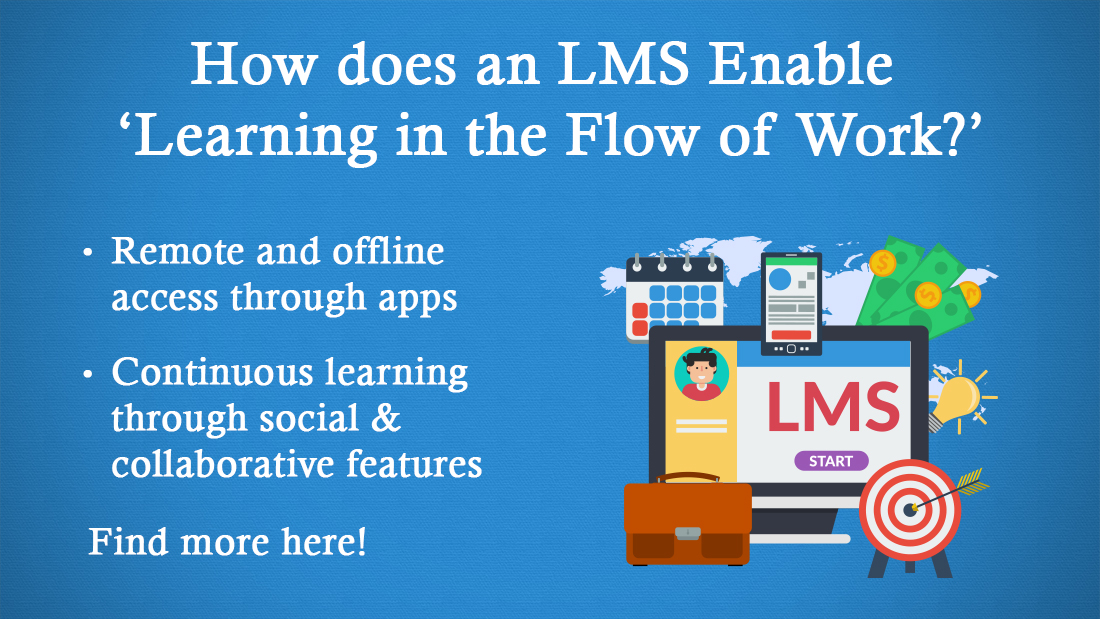Top 10 Benefits of Implementing eLearning in the Workplace

The corporate learning and development space is transitioning at rocket speed. In today's dynamic business world, the integration of technology has revolutionized traditional learning methods. One such advancement is eLearning, which offers a plethora of benefits for organizations aiming to enhance their workforce's skills and knowledge consistently. In this blog, we delve into the top 10 advantages of implementing eLearning in the workplace, tailored to meet the needs and demands of modern businesses.
Let’s Begin with Basics — What is eLearning?
eLearning refers to the use of digital technologies to deliver training content outside the traditional classroom setting. This can include online courses, webinars, virtual classrooms, and interactive modules accessible via digital devices such as computers, tablets, or smartphones.
eLearning is Buzzing the Corporate Training Arena
Here’s Why it is Ideal for Modern Workplaces:
- Saves Money
- Facilitates Anywhere Anywhere Learning
- Allows Self-Paced Learning
- Enables Consistent and Undisrupted Training
- Facilitates On-Time Access to Learning
Read on to learn more about its advantages.
Why eLearning is Right for Modern Workplaces?
In today's dynamic work environment, companies are executing affairs globally. Most businesses have a cosmopolitan presence with a diverse workforce that operates on a remote or hybrid work model. With the rapid advancements in technology and increasing competition, constant innovation has become the new norm. The need for training has increased immensely to keep up with the fast-paced changes and survive in this competitive market.
Conventional classroom training fails to cope with the dynamic nature of businesses and the evolved learning needs of modern learners. eLearning aligns perfectly with the needs of modern workplaces due to its flexibility, accessibility, and scalability. It allows employees to learn at their own pace, anytime and anywhere, fostering continuous learning and skill development.
→ Download eBook: Become an eLearning Champion!
What are the Benefits of Implementing eLearning in the Workplace?
eLearning offers a plethora of benefits for modern workplaces. Let’s dive into the key advantages of implementing eLearning:
1. Saves Money
eLearning eliminates various expenses associated with traditional training methods. This includes costs related to travel for both trainers and trainees, venue bookings for conducting training sessions, printing materials such as manuals and handouts, and instructor fees for delivering in-person training. By leveraging eLearning modules, organizations can deliver high-quality training content at a significantly lower cost, making it a cost-effective solution for training large groups of employees.
eLearning courses can be used to train multiple groups of learners across various geographic locations thereby enhancing their utility. Unlike classroom training, eLearning modules are also easy to update and save the expenses of reprinting training material even for minor edits, making them a cost-effective solution.
2. Facilitates Anywhere Anytime Learning
eLearning offers unparalleled accessibility as employees can access training materials from anywhere with an internet connection and on any device, be it a computer, tablet, or smartphone. This accessibility removes geographical barriers, allowing employees to engage in learning activities at their convenience, whether they are in the office, at home, or on the go. This flexibility in learning schedules enhances productivity by accommodating diverse work arrangements and preferences.
3. Allows Self-Paced Learning
One of the key strengths of eLearning is its ability to cater to individual learning styles and preferences. Unlike traditional classroom settings with fixed schedules, eLearning allows employees to learn at their own pace. This self-directed approach empowers learners to take control of their learning journey, leading to increased engagement and improved knowledge retention. Learners can skip the modules they are acquainted with, revisit challenging topics, spend more time on areas of interest, and progress through the material at a comfortable speed, maximizing learning outcomes.

4. Enables Consistent and Undisrupted Training
eLearning ensures consistent delivery of training content regardless of factors such as instructor availability or location constraints. This consistency leads to standardized training outcomes across the organization, reducing variations in learning experiences. Unlike traditional training that may be disrupted due to unforeseen circumstances or scheduling conflicts, eLearning provides a seamless and uninterrupted learning experience for employees, ensuring they receive the training they need when they need it.
5. Facilitates On-Time Access to Learning
With eLearning, employees have instant access to learning materials, enabling them to acquire new skills or knowledge precisely when required. This real-time access facilitates just-in-time learning, allowing employees to address immediate challenges or opportunities effectively. Whether it's learning about a new software update, compliance regulations, or industry trends, eLearning provides timely and relevant information, enhancing employee readiness and performance.
6. Ensures Increased Learner Engagement and Retention
eLearning incorporates interactive elements such as videos, quizzes, simulations, and gamification techniques to enhance learner engagement. These interactive features promote active participation, capture learners' interest, and create a more immersive learning experience. Engaged learners are more likely to retain information, apply concepts in real-world scenarios, and stay motivated throughout the learning process, leading to improved learning outcomes and skill development.

7. Reduces Learning Time
eLearning optimizes the learning process by focusing on essential concepts, eliminating unnecessary content, and minimizing downtime typically associated with traditional training methods. This streamlined approach to learning enables employees to acquire new skills faster and be more productive in their roles. By removing barriers to learning and delivering targeted content efficiently, eLearning reduces the overall time spent on training while maximizing learning effectiveness.
8. Allows Scalability
eLearning platforms are highly scalable, allowing organizations to accommodate a growing workforce or changes in training requirements without significant additional resources. Whether training a handful of employees or thousands across different locations, eLearning offers scalability by leveraging digital technologies and cloud-based solutions. This scalability ensures that training programs can adapt to organizational growth and evolving learning needs while maintaining quality and consistency across the board.
9. Enables Customization of Content
eLearning enables organizations to customize training content to align with diverse learning styles, preferences, and job roles within the workforce. Tailored learning paths and modules cater to individual needs, ensuring a personalized learning experience for each learner. By accommodating different learning preferences, such as visual, auditory, kinesthetic, or interactive learning styles, eLearning maximizes engagement, comprehension, and knowledge retention among employees.
10. Provides Scope for Real-Time Evaluation and Feedback
eLearning platforms provide real-time assessment tools, analytics, and feedback mechanisms that enable organizations to track learner progress, identify areas for improvement, and offer targeted support. This data-driven approach to training evaluation allows organizations to make informed decisions, refine training strategies, and continuously enhance the effectiveness of their training programs. Real-time feedback also fosters a culture of continuous learning and improvement among employees, driving performance and skill development.
When it comes to designing awesome eLearning courses, AI tools play a crucial role. Here’s a video that will walk through popular AI tools for effective eLearning design and development. Watch it now!
eLearning — The Future of Corporate Training
The implementation of eLearning in the workplace offers a myriad of benefits that align with the evolving needs of modern businesses. From cost savings and flexibility to enhanced engagement and personalized learning experiences, eLearning empowers organizations to foster a skilled and adaptable workforce capable of driving success in today's competitive landscape. Embracing eLearning is not just a choice but a strategic investment in unlocking the full potential of your workforce and staying ahead in the digital era.
Want to become an eLearning champion? Here’s an eBook for actionable insights. Grab it now!





